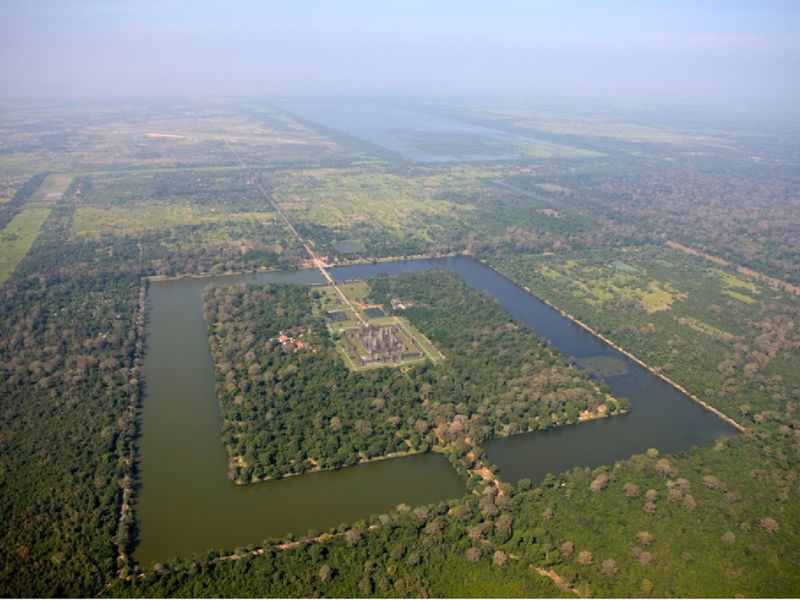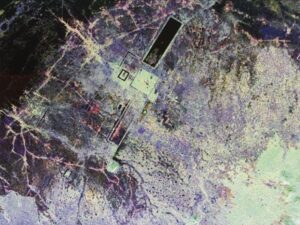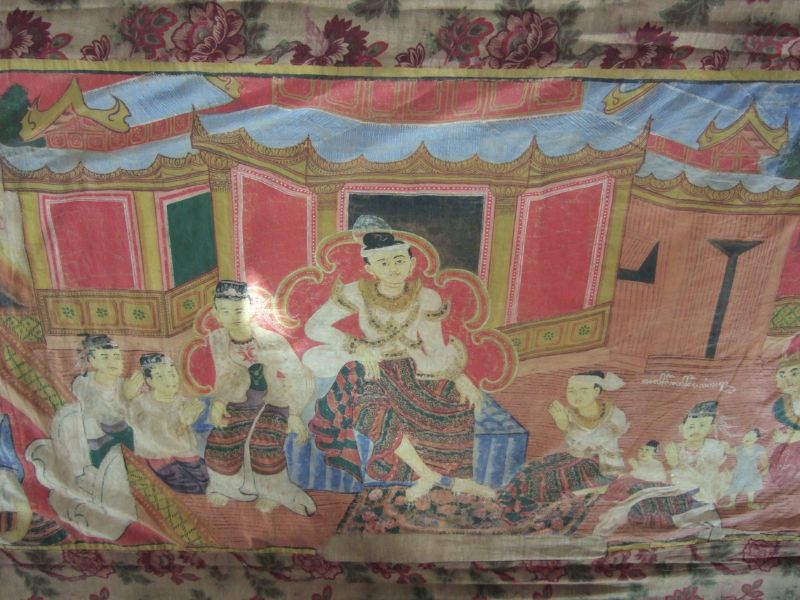
- This event has passed.

Aerial view of Angkor. Photo courtesy Michael Dago
The Greater Angkor Project commenced in 1998. In 1995 the significance of low-density, agrarian urbanism had been recognised in “The Limits of Settlement Growth”. A theoretical model led to the paradoxical prediction that low-density settlements could, in principle, expand infinitely and last forever, neither of which describes reality. A fundamental issue, therefore, arose that the contraints on the maximum extent of low-density, agrarian urbanism and the factors which actually limited their duration had to be identified by fieldwork.
Angkor (8th -14th-15th c. CE), in Cambodia, was already known to be a very extensive settlement, though conventionally it was described as 9 sq km walled enclosure with some big temples outside. In Washington DC in the mid-1990s I was given a copy of the radar image of the Angkor region taken from the Space Shuttle which decisively showed the actual, vast urban extent of Angkor. The Greater Angkor Project has been an international, collaborative and interdisciplinary program to study that settlement, combining the extensive survey work of Christophe Pottier, excavations, geoscience and the use of innovative remote sensing. This is its 25 year long story.

Radar image – SIR-C/X SAR from NASA-JPL 1994
ROLAND FLETCHER
Roland Fletcher is Professor of Theoretical and World Archaeology at the University of Sydney. He completed his PhD at Cambridge University in 1975 and has worked at the University of Sydney since 1976. In 1995 he published The Limits of Settlement Growth with Cambridge University Press in which he developed the Interaction-Communication Model and its associated matrix diagram. He initiated the Greater Angkor Project, to study the form, operation and demise of Angkor, in collaboration with the Cambodian agency, APSARA and the Ecole francaise d’Extreme Orient. A key result has been the identification that the demise of Angkor was related to the impact of severe climate change. From the research on Angkor he has expanded the global analysis of low-density settlement patterns in archaeology over the past 7000 years and analysed the relationship to present-day urbanism.
Roland has been a Distinguished Fellow of Durham University’s Institute of Advanced Study and an annual residential fellow at the Danish National Urban Networks Centre, an invited speaker at the Falling Walls Conference in Berlin and a keynote speaker at the Chinese Institute of Urban Planners symposium in Nanjing and the Shanghai World Archaeological Forum. Recently he established a joint research program with Professor Manuel Fernandez-Gotz in Edinburgh and was joint editor of the Journal of Urban Archaeology 7 in 2023 as part of his ongoing research on the large-scale outcomes of human behaviour.
Please make all bookings and payments in advance via this website. No refunds
